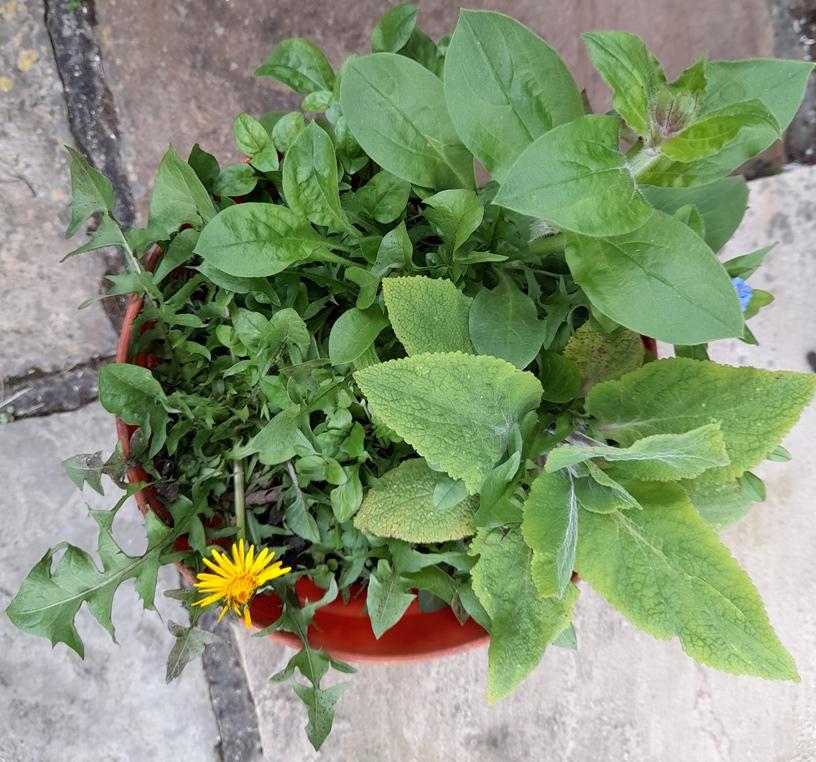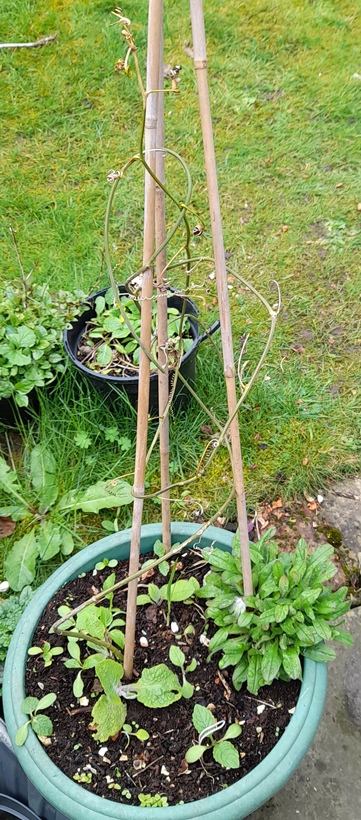garden in a pot: forget-me-not (blue flower just visible far right), red campion, foxglove, dandelion and selfheal I just found under the plants, probably others, will wait and see

Identifying seedlings
I have a lot of seedlings / small plants in the pots I brought with me in my move. Some I'm not sure of but will follow them closely.
I think these are giant scabious (Cephalaria gigantea) ? maybe small teasel (Dipsacus pilosus) ?

these look a bit different from those above so not sure

self-seeding from the seedhead, not absolutely certain which but will go back and look at my photos

small leaves look like wood avens but that larger leaf in the centre looks possibly common hogweed, will see how it develops

various things here, green alkanet, small teasel or giant scabious, honesty

teasel, verbena bonariensis, a couple unknown

closer view of those unknown bottom right

willowherb, I'm guessing great hairy willowherb (Epilobium hirsutum) ? as I think I had it in my last garden but not sure, will have to check my photos

lots of willowherb, red deadnettle in the centre, oxeye daisy to the right, speedwell bottom right

chickweed in flower and navelwort

closer view of those chickweed flowers

navelwort, 2 small globe thistle seedlings

globe thistle, forget-me-not, scabious

globe thistle, small teasel

globe thistle, foxglove, and?

artichoke, wilting but I hope it will revive

acquilegia, forget-me-not, scabious

selfheal, cleavers, speedwell

sawwort

I had lots of passionflower in my last garden. I potted up one of the seedlings to bring with me. It was looking good but it has died back. How quickly we forget! I can't remember if they all died back during winter in my last garden. I will see if this one comes back to life. I very much hope it does.
